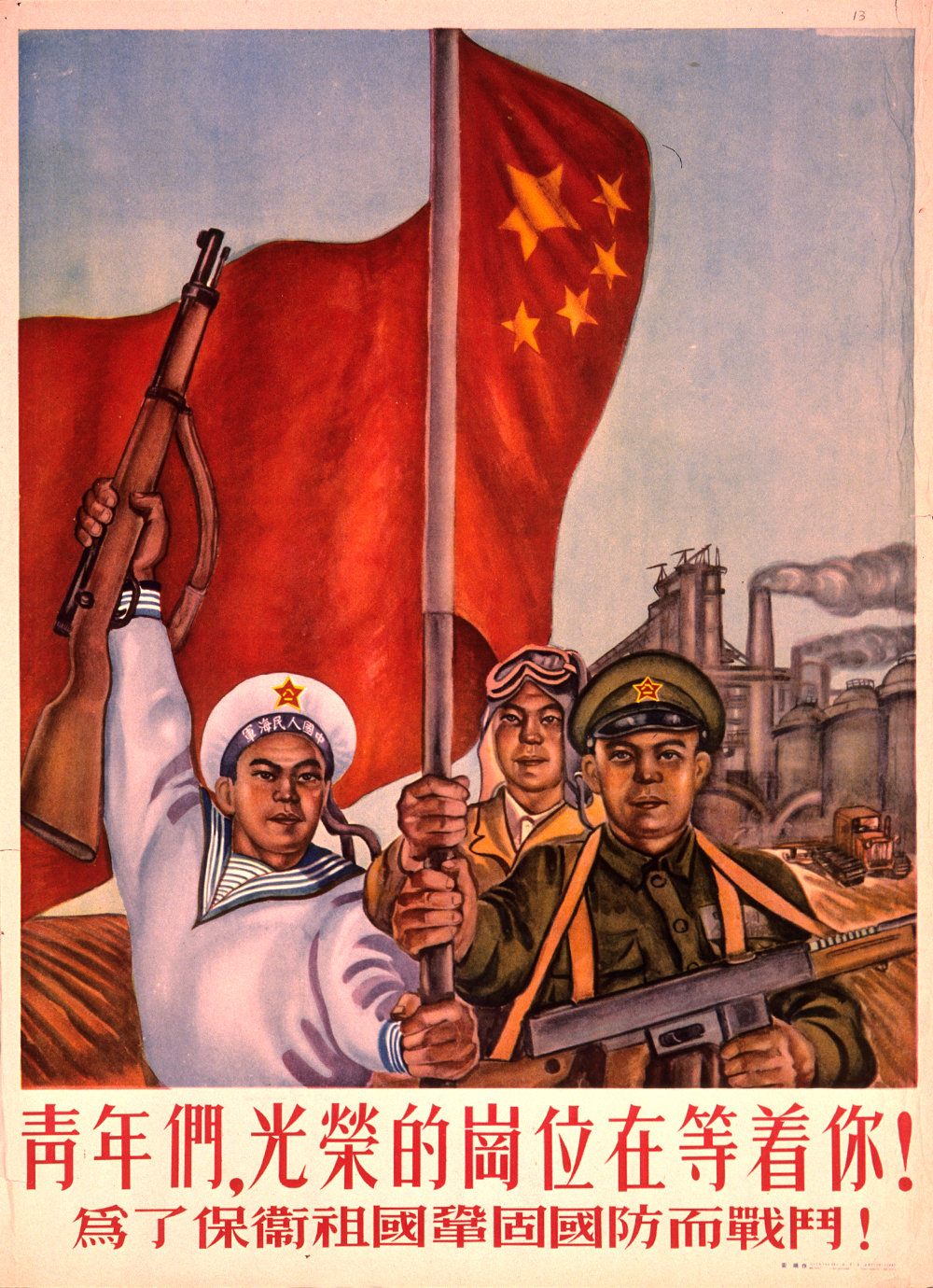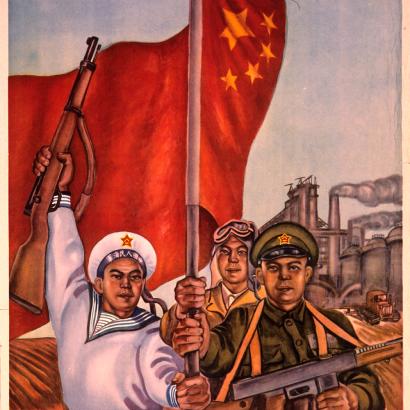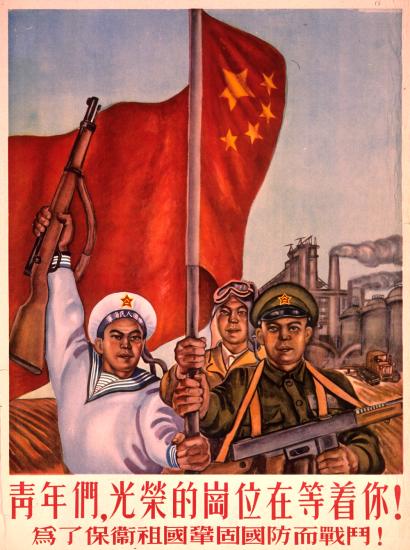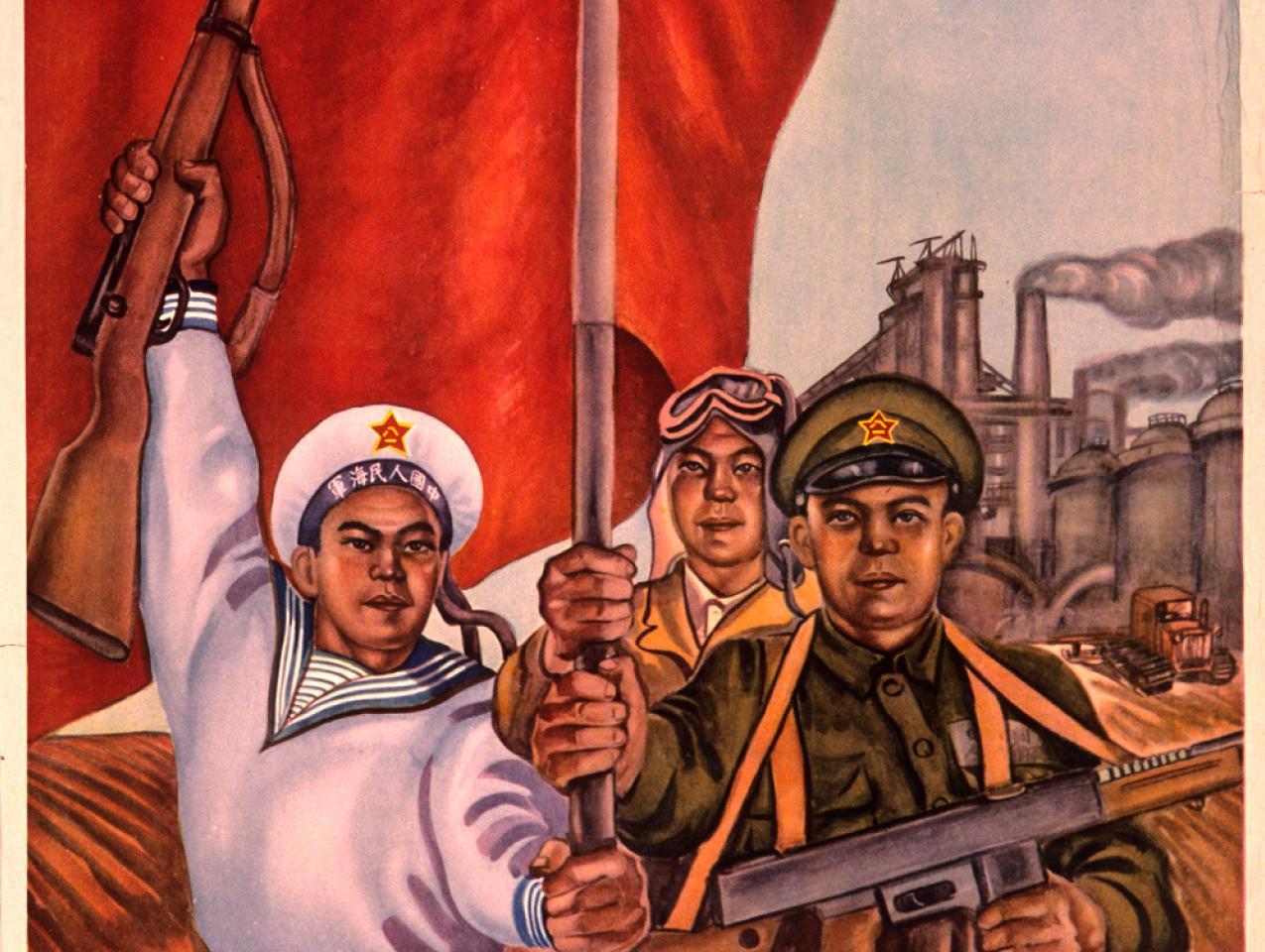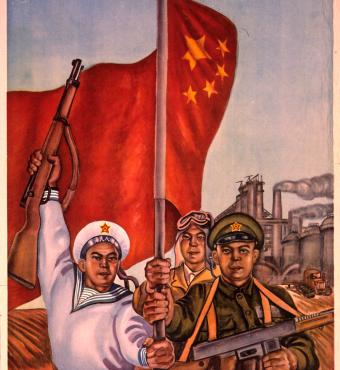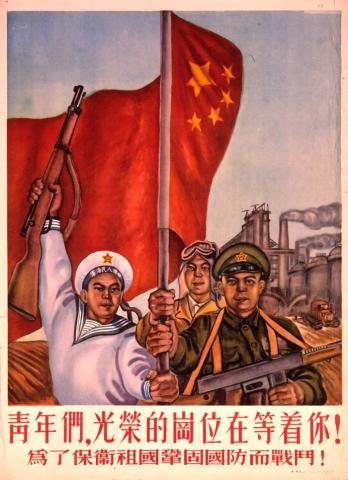- History
- China
- Confronting and Competing with China
Historically, China did not operate with a fixed concept of “border” as understood in the modern geopolitical sense. Under dynastic rule, the Chinese emperor was seen as the sovereign of all lands under heaven, with territories directly under his control, and those beyond considered either uncivilized or part of a tributary system acknowledging the Middle Kingdom’s supremacy. This system, which lasted until the fall of the Qing dynasty in 1912, did not necessitate defined borders as the emphasis was on hierarchical relations rather than territorial sovereignty. The arrival of European colonial powers in Asia, with their insistence on clear territorial demarcations for their colonies, dramatically altered this perspective, forcing China to confront the concept of borders in negotiations with both colonial powers and neighboring states.
Although the post-Qing Republic of China under the Chinese Nationalist Party had tried to define national borders with various countries, it was mostly unable to do so due to incessant domestic strife and foreign invasions. The formation of the communist state, the People’s Republic of China (PRC), in 1949 thus presented the newly established communist government with significant opportunities to negotiate and define its borders with neighboring countries. Normatively, vigorous but fair and respectful border negotiations are crucial for national sovereignty, security, and territorial integrity, driving a country’s foreign policy and its interactions with neighboring states.
However, the PRC has adopted a set of border strategies since its founding that have boomeranged at Beijing, squandering numerous historic opportunities to make peace with its many neighbors—more than any other country in the world, the PRC shares its land borders with 14 countries and has maritime boundaries with several others, including significant powers and smaller nations alike.
Instead, the PRC’s misguided border strategies have made many neighboring countries China’s formidable adversaries. In order to fight back at the PRC’s aggressive territorial and maritime demands, some have forged alliances with global superpowers, historically the Soviet Union and currently the United States, further intensifying China’s multiple border challenges.
The result is the PRC’s most identifiable characteristic, i.e., a deeply held security paranoia, a siege mentality based on a belief in strategic encirclement, perceived or real, by its many neighbors and their powerful global superpower allies. This deep-seated security paranoia within Chinese strategic thinking heightens and enriches the fear of an international conspiracy aimed at containment of China. It is this border-fueled security paranoia that has animated communist China to develop its critical military capabilities that have been at the center of the PRC’s regional aggression and its global strategy for dominance.
China’s approach to its border policies is profoundly influenced by a combination of four key factors: ideological commitment, strategic calculation, legitimacy competition with the Republic of China (Taiwan), and the CCP’s desire to demonstrate its all-round prestige and invincibility.
Marxist-Leninist Ideology is the primary reason for China’s security paranoia. At the core of the PRC’s governance and foreign policy is its adherence to a strict Marxist-Leninist ideology. This ideological framework not only shapes domestic policies but also defines China's interactions on the global stage, especially with its neighbors. Historically, the Chinese Communist Party (CCP) has shown a tendency to reach amicable settlements with countries that align ideologically with communism, or exhibit authoritarian anti-Western sentiments. This is evident in its extraordinarily generous border settlements with nations like the Soviet Union (and later Russia), Mongolia, Burma, and North Korea, whereby territories perceived to be within China’s sovereign domain dozens of times larger than Taiwan were traded away to these ideological fellow travelers.
The CCP’s ideological stance has also led to the weaponization of border issues against countries perceived as ideological adversaries or allies of its ideological foes, notably the United States and its allies like Japan, South Korea, and the Philippines. Taiwan's situation exemplifies this ideological conflict, where territorial integrity is secondary to the ideological dispute between the CCP and the Republic of China (ROC) in Taiwan and its democratic allies in the West. The CCP’s historical willingness to cede territory much larger than Taiwan to ideologically compatible countries while fiercely contesting Taiwan's sovereignty underscores the primacy of ideology over territorial concerns.
The PRC’s primary strategy in international politics, i.e. Using Confrontation to Extract Cooperation (以对抗求合作) has been equally instrumental in causing China’s security paranoia. A hallmark of China’s diplomatic approach, this strategy seeks to manufacture confrontation and provocation to force negotiation and cooperation from a position of strength. It involves initially escalating tensions to create a problem for another party, thereby increasing China’s bargaining power and compelling the other party to negotiate from a weaker position.
China used this tactic most saliently during the Korean War, when most of the battles after the first year of the conflict were waged by CCP troops to create a more advantageous position during the marathon negotiations at Panmunjom with the UN forces about the conditions in which the POWs from both sides should be exchanged. China wanted unconditional return of all Chinese POWs, while the UN insisted on letting each Chinese POW declare his individual intention as to whether he wished to go back home or stay in the free world.
Another telling recent example is China’s deliberate provocations during the Biden Administration over the Taiwan Strait to challenge the confrontation-averse White House in order to gain more strength in many bilateral strategic summits with the eager and cooperative Biden Administration. Had House Speaker Nancy Pelosi visited Taiwan during the Trump Administration, the CCP would not have had such a violent and deliberate reaction to her visit in and around the Taiwan Strait, because China has been made clear that such a tactic would never work with an American administration that knows its playbook and is willing to retaliate with preponderant forces.
In many border settlements, the CCP’s strategic provocations are designed to test and exploit the confrontation-aversion of other nations, aiming to achieve favorable outcomes through subsequent negotiations. Almost all the bloody border tensions with India since 1959, for example, were provoked by the PRC in order to gain the upper hand in negotiations at the upcoming round of border talks. The miscalculation of this dogmatic PRC approach is that such deliberate provocations can only enhance India’s animus toward the PRC. In fact, of all the countries bullied by the PRC with such tactics, none has shown a permanent sign of submission. The stiffened resistance to the PRC’s provocation in turn augments the CCP elite’s security paranoia—of its own making.
Competing with Taiwan for the right to represent “China” also plays an important role in the escalation of China’s border tensions with its neighbors—and its security paranoia.
Many of China’s border disputes originate from territorial claims made by the ROC, which moved to Taiwan in 1949. The PRC’s insistence on being the sole legitimate government representing China is a response to Taiwan’s claims over territories like the South China Sea and the Senkaku Islands. Conversely, this struggle for legitimacy extends to Mongolia, where, despite the PRC’s recognition of Mongolian sovereignty, the ROC still is divided on whether Mongolia should be considered part of the ROC or not, with the Democratic and Progressive Party (DPP) recognizing Mongolia’s independence in 2002, and the Chinese Nationalist Party (KMT)tending to claim otherwise. The territorial disputes, therefore, are not only about land but also about the right to represent China on the international stage.
Finally, the CCP’s imperial ambition and communist hubris to showcase its power and legitimacy as the central government of China has led to efforts to claim territories like Tibet and Xinjiang, which had had tenuous relations with imperial China and were at times de facto independent. The invasion and subsequent “liberation” of these regions are portrayed in the CCP’s propaganda as critical achievements in realizing the Chinese dream of national reunification and rejuvenation. The narrative emphasizes the CCP’s role as the only political party capable of restoring China’s historical greatness, further motivating its aggressive stance on border disputes. When China’s occupation, brutal repression, and genocides in Tibet and Xinjiang aroused international condemnation and sanctions, the CCP inevitably regarded these responses as yet more tangible evidence of international containment of the world’s sole remaining communist regime of consequence, adding another layer to the already incurable security paranoia.
China’s border policies are intricately linked to its Marxist-Leninist ideology, calculated use of confrontation, the ongoing struggle with Taiwan over legitimacy, and the desire to showcase communism’s invincibility in conquering historically independent territories adjacent to China. These factors collectively explain the PRC’s assertive, and at times aggressive, stance in its international relations and border disputes. Understanding these determinants is crucial for analyzing China’s actions on the global stage and anticipating its future policy directions.







